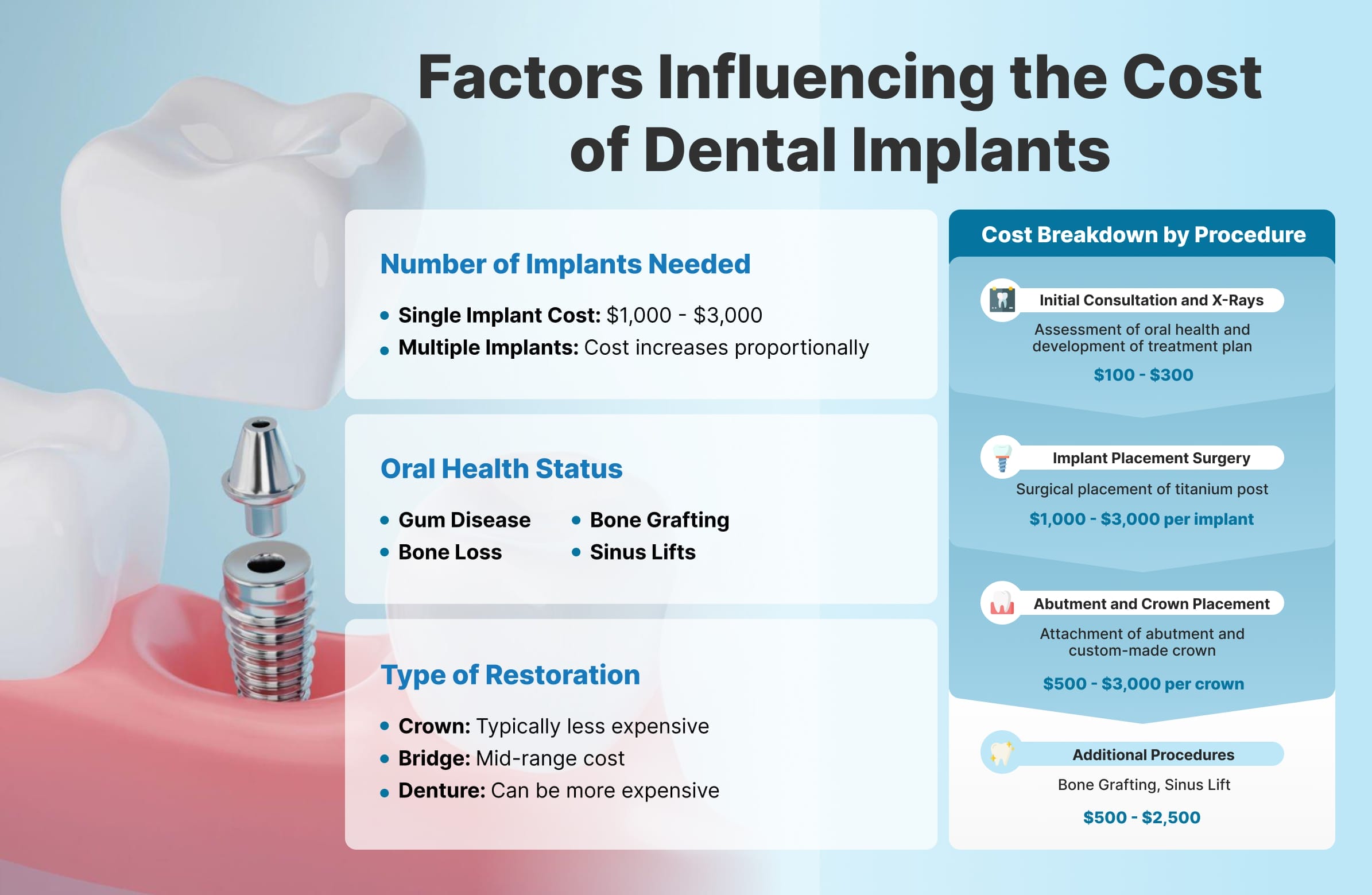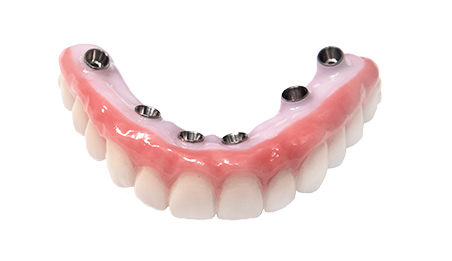Dental Sense Fundamentals Explained
Dental Sense Fundamentals Explained
Blog Article
An Unbiased View of Dental Sense
Table of ContentsLittle Known Questions About Dental Sense.About Dental SenseDental Sense Can Be Fun For AnyoneAbout Dental Sense
are medical tools surgically dental implanted right into the jaw to recover a person's capacity to chew or their appearance. They give assistance for fabricated (fake) teeth, such as crowns, bridges, or dentures. When a tooth is lost due to injury or illness, an individual can experience difficulties such as rapid bone loss, faulty speech, or adjustments to chewing patterns that cause discomfort.Oral dental implant systems include a dental implant body and dental implant abutment and might also include an abutment fixation screw. Root canal procedure. The oral implant body is surgically placed in the jawbone in area of the tooth's root. The oral implant joint is normally affixed to the implant body by the joint fixation screw and expands through gums into the mouth to sustain the attached fabricated teeth
(https://www.goodreads.com/user/show/186244556-matthew-music)Framework of The Oral Implant System choosing oral implants, talk with your dental provider concerning the prospective benefits and risks, and whether you are a candidate for the procedure. Things to take into consideration: Your general wellness is a vital factor in establishing whether you are a great candidate for oral implants, for how long it will require to heal, and for how long the dental implant might remain in area.
Smoking cigarettes may affect the healing process and lower the long-term success of the implant. The healing process for the dental implant body might take a number of months or longer, throughout which time you usually have a short-term abutment instead of the tooth. the oral implant treatment: Carefully follow the dental health guidelines provided to you by your dental copyright.
The Basic Principles Of Dental Sense
Implant failing can lead to the need for an additional surgical procedure to repair or replace the implant system. Recovers the capacity to chew Recovers cosmetic appearance Aids keep the jawbone from shrinking because of bone loss Protects the health of the bordering bone and gum tissues Assists keep adjacent (close-by) teeth secure Improves lifestyle Damage to surrounding all-natural teeth during implant positioning Injury to the surrounding tissues during surgical procedure, such as sinus perforation Injury during surgical procedure (for example, fracture of surrounding jawbone) Poor function, such as seeming like the teeth do not attack with each other usually A feeling that the tooth is loosened or twisting in location resulting from an abutment screw loosening Implant body failure (looseness of the dental implant body) as a result of systemic infection, which might be more probable in clients with unrestrained diabetics issues because of regional infection in bone and gum tissues supporting the implant body because of delayed recovery, which may be most likely in individuals that smoke Problem cleaning the periodontals around the implant, leading to inadequate oral hygiene Untreated periodontal disease Post-surgical feeling numb as a result of nerve impingement or damage Constantly notify wellness care companies and imaging technicians that you have oral implants prior to any kind of magnetic vibration imaging (MRI) or x-ray treatments.
FDA is not knowledgeable about any type of damaging occasions reported for MRI or x-ray procedures with oral implants. Dental implants systems are normally constructed from products that follow worldwide consensus criteria of the International Organization for Standardization (ISO) or ASTM International. These criteria have information of what makes a safe material.

An oral implant is a structure that changes a missing tooth. With screw-like tools, the doctor inserts an implant into the jawbone, and it acts as a support for a man-made tooth, called a crown.
The smart Trick of Dental Sense That Nobody is Talking About
Some people are not eligible for oral implant surgery. It is for dental surgeons to operate on people with: severe illnessuncontrollable metabolic diseasebone or soft tissue illness or infectionIf these issues are fixed, an individual can have the surgery. In, dental cosmetic surgeons abstain from operating on individuals with: If individuals with any one of the above undergo oral implant surgical procedure, there is a higher threat of the implant stopping working.

Oral dental implant surgical treatment is a customized procedure. Offer you time to heal. Attach the message and final crown, bridge or denture.
Next, your doctor will thoroughly position the oral implant right into your jaw. Ultimately, your cosmetic surgeon will reposition your gums and shut the incision with stitches. If your implant is near the front of your mouth, your dental practitioner will make a temporary tooth for you to use until you recover. In this way, you will not have a void in your smile while you recuperate.
An Unbiased View of Dental Sense
Your company can tell you what to expect in your situation. During the recovery stage, your jawbone ought to fuse to the oral implant. This process, called osseointegration, is essential for security and long-term success. This procedure can take anywhere from three to nine months. Sometimes, it may take longer.
Once your dental implant heals, your dental professional can affix the abutment (little port post) and your final remediation (crown, bridge or denture). This normally takes about one hour to complete and may call for a 2nd small surgery. You should not feel any discomfort during your oral implant treatment because your supplier will make use of medication to numb your periodontals.
Report this page